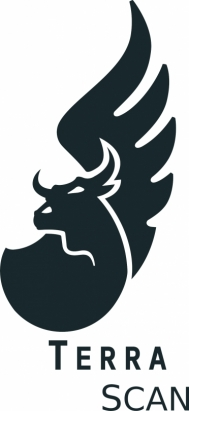
VorteX-io is an innovative French company at the cutting edge of hydrology, offering a range of high added-value decision-support services. These include preventing flood and drought risks, improving water resource management and optimising the operation of hydraulic infrastructures. Within two years, vorteX-io will offer the first river forecasting service for the whole European continent based on the creation of digital twins of watersheds. To this end, vorteX-io is currently deploying a network of several hundred of its own innovative remote sensing devices across Europe as part of the WHYLD project, co-funded by the European Innovation Council (EIC).
vorteX-io is developing the first European database for real-time, high accuracy, hydrological data, aiming to monitor all European watercourses, with a focus on the 7,000 flood risk areas identified by the European Commission. Their user-friendly data marketplace, Maesltrom, allows customers to visualize real-time watercourses and access features like archived data, rainfall estimates, water flow, and a predictive indicator for flood risk. The data is obtained through low-cost, plug-and-play hydrological stations and artificial intelligence algorithms. This solution addresses the lack of large-scale hydrological data and provides a cost-effective, scalable solution for stakeholders.
The solutions provided by vorteX-io contribute to EU priorities such as risk prevention, civil protection, and climate disaster prognosis. They also support the construction of an accurate and connected European network for collective resilience. The actions of vorteX-io align with UN Sustainable Goal 13, which focuses on addressing climate change and its impacts, and strengthening resilience and adaptive capacity to climate-related hazards and natural disasters in all countries.
vorteX.io’s unique selling point is hydrological data as a service, with two differentiators: micro-stations that measure and transfer water parameters in real-time, and a scalable distribution model through a self-subscription service on an all-inclusive SaaS platform. The innovation includes a proprietary sensor, the micro-stations, providing real-time hydro-meteorological parameters, and a non-binding turnkey business model. The level of innovation is high, as the availability of an “anytime/anywhere” hydrological database through a SaaS service is new in the hydrology domain. The type of innovation includes a new lightweight and scalable in-situ measurement system based on space technology transfer.
The WHYLD project, led by vorteX-io and co-financed by the European Innovation Council, aims to meet the increasing need for real-time monitoring of hydrological surfaces in Europe, particularly in France where over 8,000 cities lack such solutions. The project could serve as an enabler for more precise predictive analysis regarding climate change impacts, such as floods and droughts. The initiative is expected to strengthen Europe’s technological sovereignty in preventing hydrological hazards.
The need for hydrological measurements is growing worldwide due to increasing flood risk awareness and climate change. The proposed WHYLD project, a first-of-its-kind SaaS service, aims to address the lack of hydrological data with a network of micro-stations providing real-time measurements. This innovation, already tested in France and Europe, is a strategic technology for all countries threatened by floods.
The total addressable market (TAM) for this service is expected to reach $23.46 billion by 2027. The company aims to capture 1% of the serviceable available market (SAM), estimated to be $2.4 billion by 2027. The company faces competition but has a unique value proposition and a business model that differentiates it from its competitors. The company’s strengths include a scalable product, an experienced team, and a unique business model. However, it also has weaknesses such as a prototype service and a lack of skills in marketing and sales.
About WHYLD
To address the worldwide rise in climate-change driven devastating flood events, project WHYLD at vorteX-io aims to demonstrate the benefits of a large-scale real-time hydrometeorological database towards assisting governments in effective flood risk management.
Backed by the EIC Accelerator Programme, project WHYLD involves the development and deployment of an innovative and intelligent river forecasting service. This is made possible thanks to proprietary algorithms and hardware inspired by satellite technology: vorteX-io’s Micro-stations that can measure data such as water surface height and velocity, with ongoing R&D for river flow and rainfall rate parameters.
The project’s initial phase involves large-scale deployment of this non-binding turnkey service in two pilot countries, France and Croatia, eventually covering all of Europe and flood-risk areas globally.



